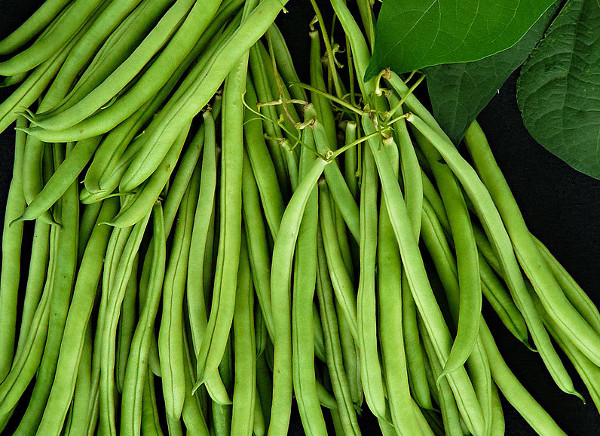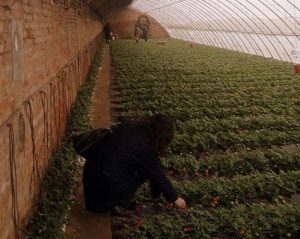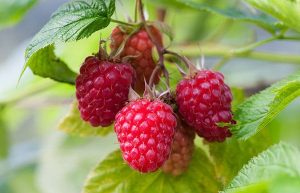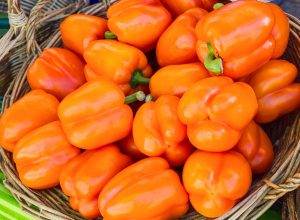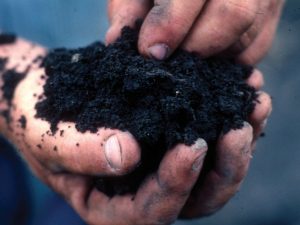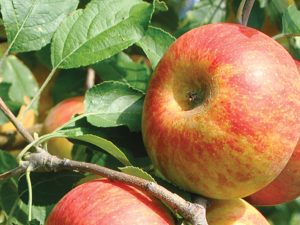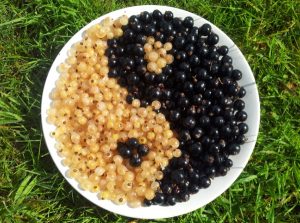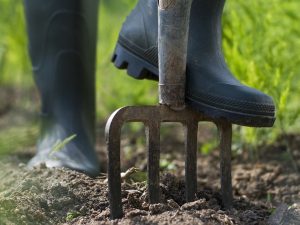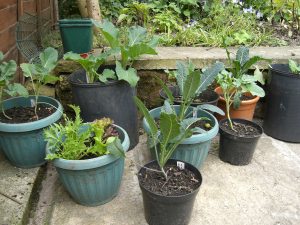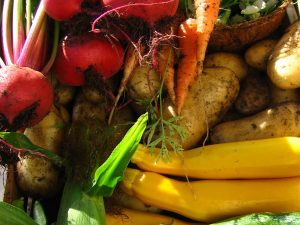July is usually one of the hottest and driest months so a lot of time may be spent watering. You can reduce water loss and so save yourself some time. Mulching with a layer of organic matter will help preserve moisture but may encourage slugs so you will need to take action against them.
Another good method of preventing water loss is to hoe. This not only kills the weeds but breaks up the top of the soil stopping water from being drawn to the surface by capillary action and evaporation.

Although the hectic sowing of the first part of the year is past, there are still things to sow, plant out and happily harvest.
Those early potatoes should be coming out of the ground now and although they do not store as well as the maincrop varieties they will store until finished.
Sowing & planting in July on the vegetable plot
Direct Sowing
In dry weather draw your drill and water it well prior to sowing and then just water with a fine rose after to settle the seeds in.
In really hot spells you might need to water young seedlings early morning and late evening to keep them going.
Although the sowing season is coming to a close there are still things to sow in July:
- Spring Cabbage
- Chicory
- Chinese cabbage
- Kohl rabi
- Lettuce
- Peas
- French Beans
- Beetroot
- Carrots
- Radishes
- Turnips
Planting out
If they’ve not gone out yet, it’s time to plant out your leeks. Just dib a hole about 150mm 6″ deep and drop the leek into the hole. Water it in and the job’s done. Don’t follow old advice about trimming the tops and roots, it has no beneficial effect and is probably harmful. You don’t need to fill the holes with soil, enough will wash in with watering and rain. The reason you plant in a hole is to blanch the stem.

Brassicas from pots can go out as well: broccoli, calabrese, Brussels sprouts and cabbage
Green manures
I like to follow on the first early potatoes with leeks but otherwise a green manure can avoid bare ground which is just going to grow weeds. Mustard is fast growing and is supposed to confuse the potato eel worm into breeding at the wrong time, hence a follow on to potatoes. It is a brassica so don’t use it if you suffer from club root.
Another fast growing green manure crop you can use is French beans. Even if you have enough beans for the kitchen, the plant produces a fair amount of leaf and stem plus the roots, as with all legumes, have nodules containing bacteria that fix nitrogen from the atmosphere. .
Cultivation, pests & problems
The same advice as for June applies to watering, slugs & snails and butterflies. If you’ve not netted your brassicas against butterflies (and probably if you have!) then I guarantee you’ll have missed some butterfly eggs.
It really is worth double checking, look close to the stem, and getting any caterpillars that may have hatched out. There’s little left in the gardener’s kit bag in the way of sprays nowadays so pick them off into a bucket and drown them.
A major cause of poor crops with potatoes is poor nutrition. They are a very greedy plant and a boost now will pay a dividend in tubers. A feed balanced as for tomatoes is ideal. If you make your own feed from comfrey, this is ideal.
Keep on top of the weeds, it really is far easier to hoe them as small seedlings than as grown plants. Even if you can not see any weeds, hoeing will actually be killing tiny seedlings you have not noticed and will be helping reduce moisture loss
With broad beans you can pinch out the tops which are most attractive to blackfly. Another ‘trick’ is to plant some nasturtiums which attract blackfly. You can then pull the nasturtiums and their blackfly.
Keep your onions well weeded and don’t forget to feed them as well to get the best possible crop. As they mature they need to dry out, so don’t over water if at all. Keeping the weeds off allows air to circulate, the last thing you want is a muggy atmosphere around the onions developing moulds.

An allotment in full production in July. The plot holder is in the shed making tea as it’s about to rain.
Fruit
If we do get a prolonged dry spell, don’t forget that that fruit bushes and trees need watering. Swelling apples and currants need water as much as leafy vegetables. Give a good soaking rather than little sprinkles that encourage surface rooting.
Finish thinning apples, pears and plums etc. if needed. It’s the right time for summer pruning as well. Keep the base of trees weed and grass free, mulch to keep in moisture and add fertility with garden compost.
Pick soft fruits now assuming you’ve kept the birds away with netting or a cage and they’ve left you some. Don’t forget to use strawberry runners to grow new plants and remove unwanted runners so the plants retain strength. Grub up and replace in another spot strawberries after 3 or 4 years cropping.
In the greenhouse / polytunnel
Ensure good ventilation. It can get incredibly hot in a greenhouse with strong sun and scorch your plants. You should also consider shading the house either with blinds or films or with a shading wash
Keep pinching off the side shoots with your tomatoes and keep an eye out for pests such as aphids, whitefly, red spider mite. If you are subject to attack by these pests it is worth checking out biological controls as these are perfectly safe to use and, used correctly, more effective than traditional chemical controls.
Many of the chemical controls of the past are no longer available anyway so the organic alternatives are now the mainstream choice.
You can get John’s book Vegetable Growing Month-by-Month here.

